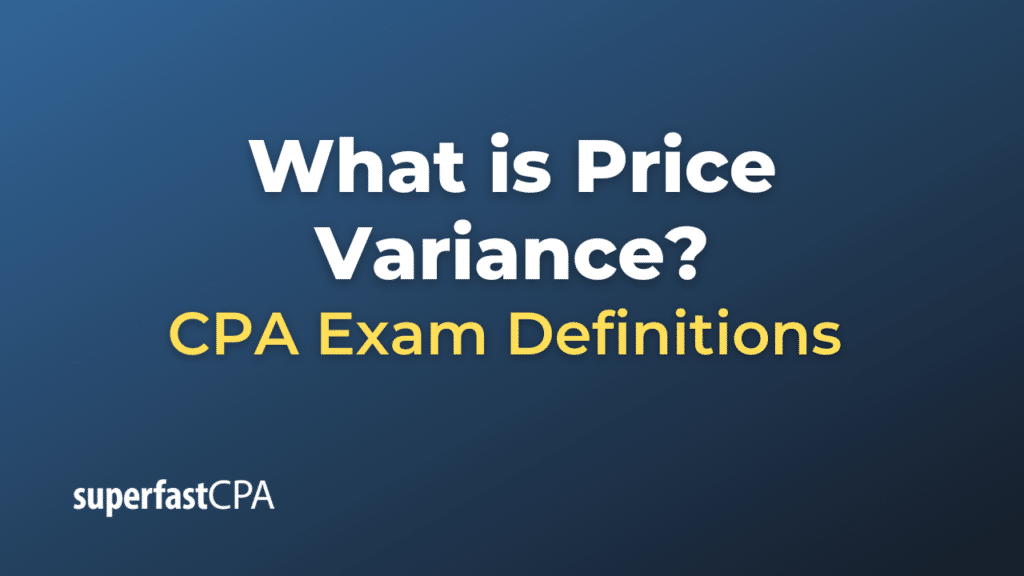Price Variance
Price variance refers to the difference between the actual cost of a product or service and its standard or budgeted cost. It is often used in cost accounting and financial analysis to help companies understand their performance relative to their budget or forecast.
The formula for calculating price variance is:
Price Variance = (Actual Price – Standard Price) x Actual Quantity
If the actual price is higher than the standard price, the price variance is unfavorable because it results in higher costs than anticipated. On the other hand, if the actual price is lower than the standard price, the price variance is favorable because it means costs were lower than anticipated.
Price variance can occur for a variety of reasons. For example, changes in market conditions could cause the price of raw materials to fluctuate. Or a company might negotiate better pricing with a supplier, resulting in a favorable price variance.
It’s important to note that price variance focuses solely on the impact of price changes. It doesn’t take into account other potential variances, like changes in the quantity of materials used or the efficiency of production. These factors would be considered separately as part of a comprehensive variance analysis.
Example of Price Variance
Let’s take an example from manufacturing to illustrate the concept of price variance.
Imagine you’re a manufacturer of wooden furniture. In your budget, you anticipated that the cost of wood would be $10 per unit for the upcoming production period, and you planned to produce 1,000 units of furniture.
However, due to unforeseen changes in the market, the actual cost of wood increased to $12 per unit during the production period.
We can calculate the price variance as follows:
Price Variance = (Actual Price – Standard Price) x Actual Quantity
Price Variance = ($12 – $10) x 1,000
Price Variance = $2,000
In this case, the price variance is unfavorable because you’re paying more for wood than you initially budgeted. The $2,000 is an additional cost that wasn’t anticipated in the budget.
This unfavorable price variance could impact the company’s profit margins if it cannot pass these additional costs onto customers by increasing the price of the furniture.
Therefore, monitoring price variances and understanding their causes can help a company manage its costs more effectively and make adjustments as needed.













